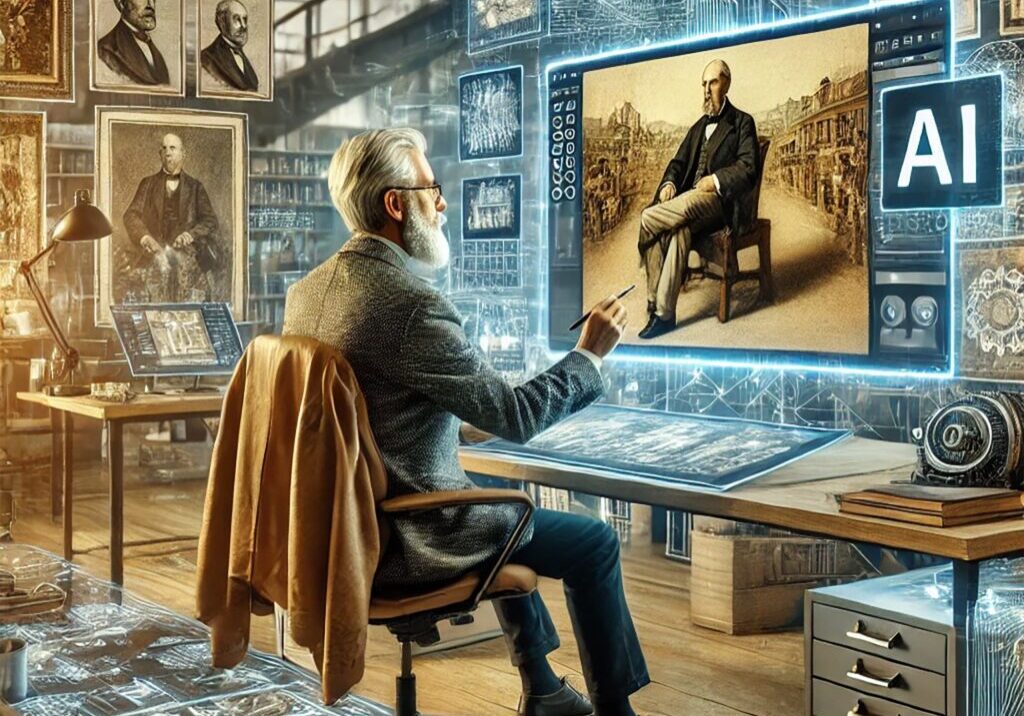
From Ink to Paint: How Rosemary Vasquez Tuthill Translates Revolutionary Print into Art
There’s something fragile about Revolutionary-era print – the kind of fragility that comes from urgency. The ink was pressed fast, the paper was cheap, and no one expected it to last. But those scraps of communication carried a cause. And when I began painting the 250th Anniversary Mural, I felt a responsibility not just to recreate those prints – but to translate them.
That’s where the idea behind this post comes from. So much of my work in the mural is about interpreting what print once did – and finding a way to express it in paint. Because printed art of the 18th century didn’t whisper. It shouted. And I had to find the color, rhythm, and texture to match that voice without losing the rawness of the original medium. When I studied broadsides, pamphlets, and woodcuts from the period, I paid attention to the imperfections. The off-center margins. The type that bled just slightly on the page. The hand- pulled look of an inky roller pressed with uneven pressure. These “errors” weren’t flaws. They were part of the message. They told you this was made quickly, by someone who had to get the message out.
So, in the mural, I didn’t polish those edges. I let some of that chaos live on. A crooked flyer. A poster with its corner torn. A word partially obscured. These are the small visual cues that signal urgency, not elegance. I also spent time thinking about how print moved. A pamphlet doesn’t hang like a framed painting – it flutters, folds, falls. In the mural, I tried to bring that movement forward. Some of the pages look mid-flight, caught in the breeze of unrest. Others sit underfoot, partially stepped on but not forgotten. I use shadow and motion lines very subtly here – not to dramatize, but to breathe life into paper. These items were handled, passed, hidden, clutched. I wanted you to feel that.
One of the biggest challenges was figuring out how to express ink using paint. Ink absorbs. Paint reflects. So I had to build thin layers, especially on printed elements, that would give the illusion of saturation without shine. I often used dry brush and glazing techniques to create the look of ink worn into porous paper. In some cases, I let the texture of the underpainting show through on purpose – so the surface would feel as soft and unstable as a Colonial-era broadside. But my job isn’t just technical – it’s symbolic. Every poster, every letterpress print, every engraving in the mural represents a leap of faith. Someone risked printing that page.
Someone else risked reading it. These artifacts carried voices that weren’t always allowed to speak. So, when I paint them, I’m not just depicting design. I’m honoring courage. One of my favorite small details is a handbill in the Unity section. It’s partially peeled, tacked onto a wooden post, text fading. It might go unnoticed at first, but it’s based on a real Liberty meeting flyer. That kind of element – the quiet ones – are some of the most powerful to paint. They hold meaning without needing to explain themselves.
For me, translating Revolutionary print into mural form is about more than history. It’s about trust. Trusting that the viewer will recognize the weight of paper. The courage in ink. The choice behind every image. I want each painted flyer to feel like it was once held by human hands – and might be again. Because while the paper may not have lasted, the message did. And now it lives in paint.

